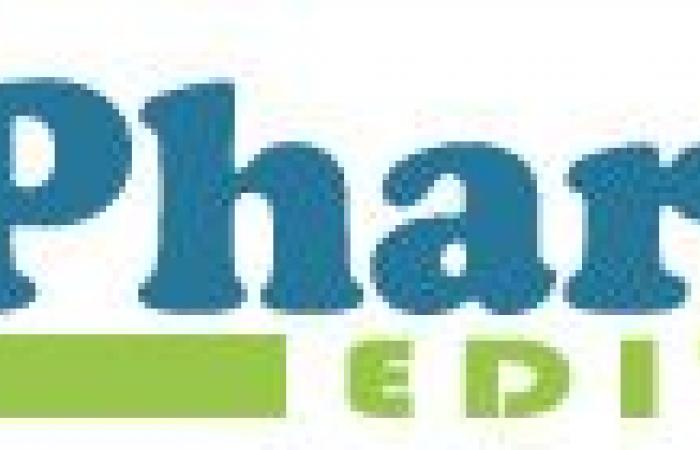
The ANSM has just granted marketing authorization (AMM) in France for Efluelda, Sanofi’s high-dose influenza vaccine, in its trivalent version. Sanofi is now continuing to work with the competent authorities to enable the return of Efluelda to France from the 2025-26 influenza vaccination campaign.
This new marketing authorization for Efluelda aims to respond to the recommendation of the World Health Organization (WHO) for a return to trivalent influenza vaccines. Indeed, the B/Yamagata strain is no longer circulating in the world, maintaining quadrivalent vaccines is no longer necessary. The European Medicines Agency (EMA) has confirmed this change and asked vaccine manufacturers to make trivalent influenza vaccines available for the 2025-26 season.
Developed with a quantity of antigens four times greater than that of a standard dose vaccine for each vaccine strain, the high-dose Efluelda vaccine is suitable for adults aged 60 and over, whose immune system effectiveness declines with age, offering them better protection against the flu and its complications. In fact, in the week following a flu infection, the risk of stroke is multiplied by 8 and the risk of myocardial infarction is multiplied by 10. 23% of those aged 65 and over experience a loss of autonomy within the month following hospitalization due to influenza.
Efluelda is the only influenza vaccine to have proven better effectiveness compared to the standard vaccine, on the basis of numerous clinical data, from randomized controlled clinical trials in elderly subjects1, as well as from efficacy data in real life, and this observed over more than 11 seasons, in more than 45 million people.2
The recent Driven study conducted in France provides new real-life data on the French population: based on Health Insurance records, covering more than 7,800,000 people, for the 2021-2022 season, it estimates the relative vaccine effectiveness of the high-dose quadrivalent vaccine compared to the standard vaccine in people over 65 years of age. In this real-world study, people vaccinated with the high-dose vaccine had 23.3% fewer hospitalizations for influenza compared to people who received the standard vaccine.3,4
Vincent Aroles, Medical Director of Vaccines, Sanofi France: “The marketing authorization of Efluelda, a trivalent influenza vaccine, is excellent news for patients but also for the health system in France. We are continuing the dialogue with the authorities to allow Efluelda to be available on the French market from the next flu season. Efluelda demonstrated superior protection compared to the standard dose vaccine in people over 60 years of age. While the flu causes an average of 10,000 deaths each winter in France, it is essential that the French can benefit from a more effective vaccine to protect themselves from the flu and its complications. The latest French data from the DRIVEN study as well as all available clinical data have been submitted to HAS to allow the evaluation of Efluelda in time for the 2025-26 influenza season. 1-3.5
The high-dose Efluelda vaccine, already available in quadrivalent form in more than 20 countries and recognized in most as a preferred vaccine in the elderly, has also demonstrated a good safety profile,6,7 including data supporting the co -administration with COVID-198 vaccines.
With more than 70 years of innovation, Sanofi is the global leader in influenza vaccines, producing and distributing nearly 250 million doses each year. Its industrial site in Val-de-Reuil (Eure) provides around 60% of this global production.
___________________
References:
1. DiazGranados CA, et al. N Engl J Med. 2014 Aug 14;371(7):635-45. DOI: 10.1056/NEJMoa1315727
2. Lee J, et al. Vaccine: X. 2023 Jun 5:14:100327. doi: 10.1016/j.jvacx.2023.100327
3. Bricout H et al. Clin Microbiol Infect. Published online August 24, 2024. doi:10.1016/j.cmi.2024.08.012
4. Johansen ND, et al. NEJM Evidence. 2023 Feb;2(2):EVIDoa2200206. DOI: 10.1056/EVIDoa2200206
5. GravensteinS, et al. Hum Vaccine Immunother. 2018 Mar 4;14(3):736-743
6. Chang LJ et al. Vaccinated. 2019 Sep 16;37(39):5825-5834. DOI: 10.1016/j.vaccine.2019.08.016
7. Pepin S et al. Human Vaccines & immunotherapeutics. 2021;17(12):5475-5486. DOI: 10.1080/21645515.2021.1983387
8. Izikson R. et al. The Lancet Respiratory Medicine. 2022 Apr;10(4):392-402. DOI: 10.1016/S2213-2600(21)00557-9
Source : Sanofi





